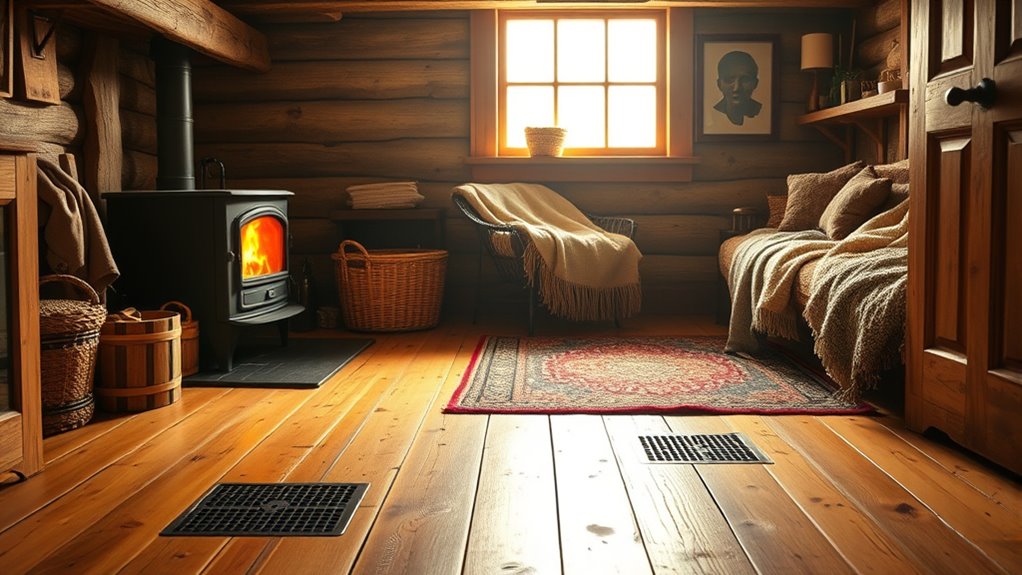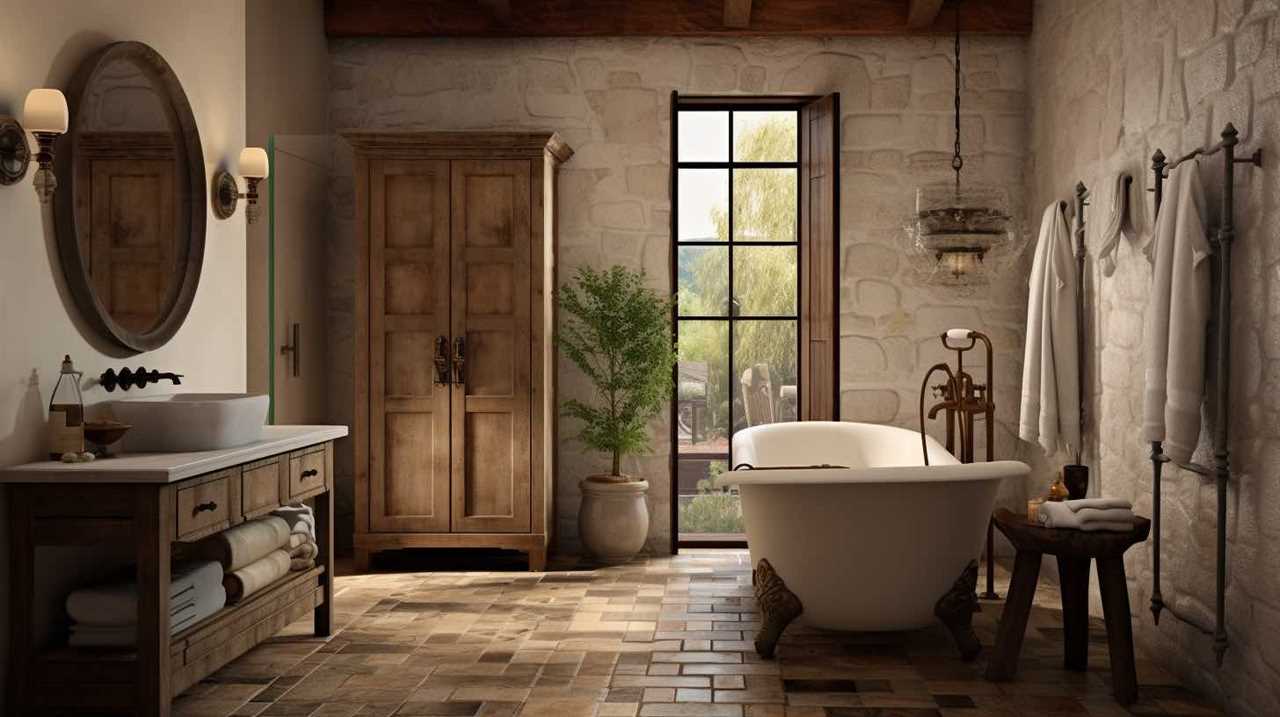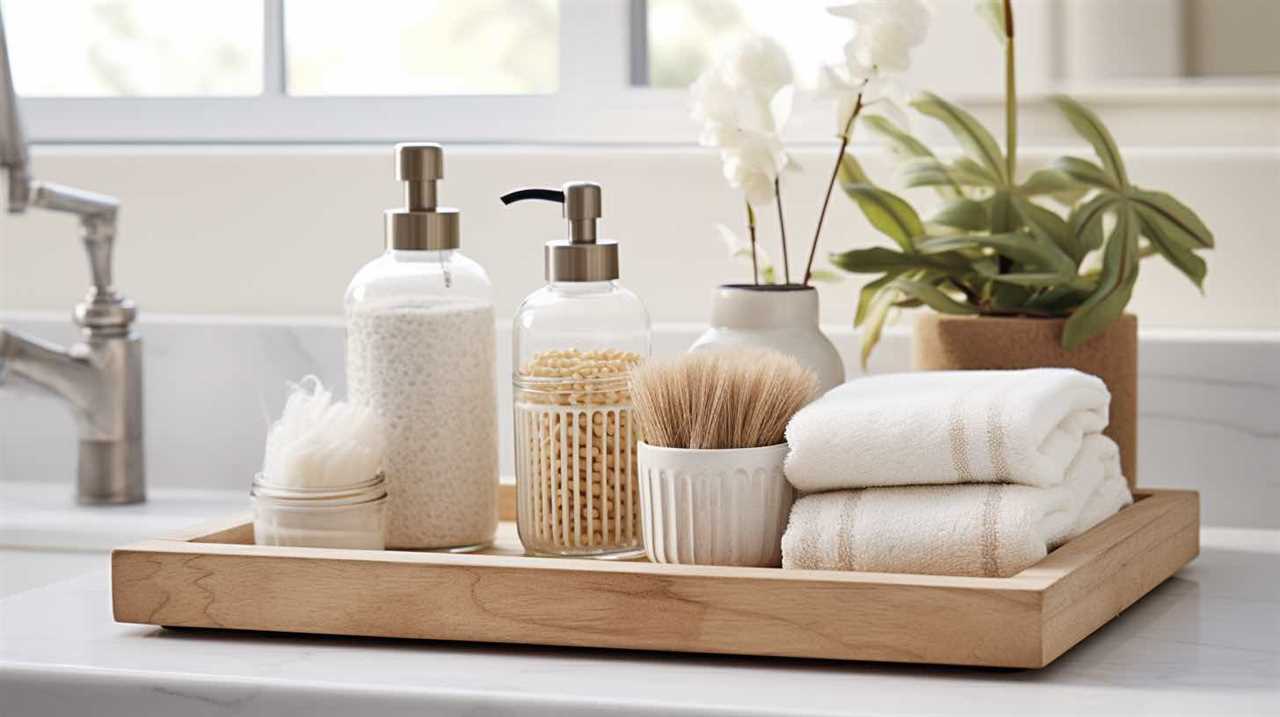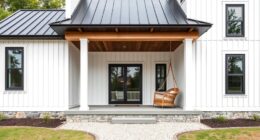Heated floors are a smart way to make your farmhouse warmer and more inviting. They provide cozy comfort underfoot by warming objects and people directly, reducing your reliance on traditional radiators. Installation varies from electric mats for smaller spaces to hydronic systems for larger areas, often saving energy and lowering bills long-term. While setup costs can be high, the benefits of endless comfort and energy efficiency are worth it. Learn more to discover how to transform your home into a warm haven.
Key Takeaways
- Heated floors provide cozy warmth and eliminate cold spots, making farmhouses more comfortable during winter.
- Installation options include electric and hydronic systems, suitable for retrofit or new construction projects.
- Although initial costs can be high, they offer long-term energy savings and lower utility bills.
- Radiant heat warms objects and people directly, reducing the need for high thermostat settings.
- Proper planning and professional installation ensure durability, efficiency, and enhanced farmhouse comfort.
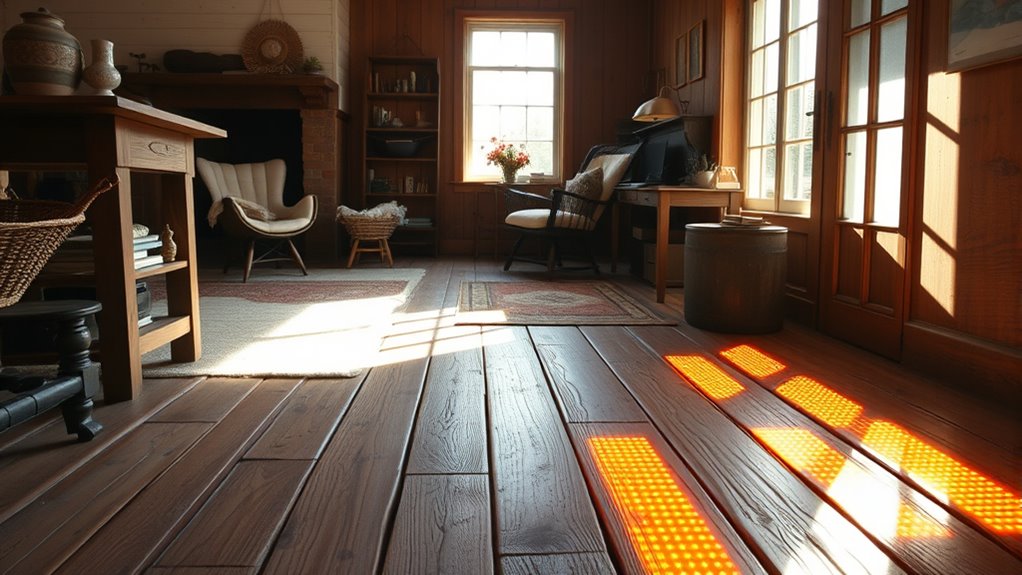
Have you ever stepped onto a cold floor and wished for instant warmth? If you live in a farmhouse, you probably know how chilly those floors can be, especially during winter months. Installing heated floors can change that experience completely. Not only do they provide cozy comfort underfoot, but they also offer a smart way to improve your home’s overall energy efficiency. Unlike traditional heating systems that heat the air, radiant floor heating warms you directly, which means you can feel the warmth even if the air temperature is slightly lower. This efficiency can translate into lower energy bills over time, making heated floors a wise investment for your farmhouse.
Warm up your farmhouse with heated floors for cozy comfort and energy savings all winter long
When considering heated floors, one of the main concerns is the installation costs. The initial expense can seem high, especially if you’re retrofitting an existing space, but it’s essential to look at the long-term benefits. The installation process involves laying heating cables or hydronic tubes beneath the floor surface, which requires some planning and potentially disrupting your current flooring. However, the costs vary depending on the size of the area and the type of system you choose—electric or hydronic. Electric systems tend to be less expensive upfront and easier to install, making them a popular choice for smaller spaces or retrofit projects. Hydronic systems, on the other hand, have higher installation costs but can be more cost-effective in the long run if you’re heating larger areas, thanks to their efficiency and potential for utilizing existing boiler systems.
Despite the initial investment, heated floors can be cost-effective over time because they operate at lower temperatures than traditional radiators, reducing energy consumption. Plus, because radiant heat warms objects and people directly, you don’t need to turn up your thermostat as much, further saving on energy bills. When weighing installation costs, it’s worth considering the durability and lifespan of the system. High-quality heated floors can last for decades with minimal maintenance, making them a worthwhile investment for a farmhouse where comfort and efficiency are priorities. Additionally, choosing a system with high contrast ratio capabilities can improve the overall visual warmth and ambiance of your living space.
In the end, the true value of heated floors lies in their ability to create a warm, inviting environment without draining your energy resources. While the upfront costs might seem intimidating, the benefits of increased comfort, energy efficiency, and long-lasting performance make it a smart upgrade. If you’re tired of cold mornings and chilly floors, heated floors could be just the cozy upgrade you need—turning your farmhouse into a warm haven you’ll never want to leave.
Frequently Asked Questions
What Is the Average Installation Time for Heated Floors?
The installation timeline for heated floors varies based on your space and system choice, but generally, it takes about 1 to 3 days. You should plan your project accordingly, considering factors like existing flooring and electrical work. Proper project planning helps guarantee a smooth installation process, preventing delays. Keep in mind that complex setups or larger areas may extend the timeline, so discuss your specifics with a professional beforehand.
Are Heated Floors Suitable for All Types of Farmhouse Flooring?
Imagine you’re in a Dickens novel, but instead of a cold draft, radiant heating keeps your farmhouse cozy. Not all flooring types are compatible, so you need to verify flooring compatibility before installation. Hardwood, tile, and laminate generally work well, but carpets and certain vinyls might not. Always consult with a professional to guarantee your chosen radiant heating system suits your specific flooring, making your farmhouse both warm and charming.
How Much Does It Cost to Install Heated Floors?
When you ask about the cost to install heated floors, consider the main factors like size, flooring type, and system choice. Installation costs typically range from $6 to $20 per square foot. Keep in mind, energy efficiency can help offset ongoing expenses. Your initial investment varies, but it often pays off through comfort and lower energy bills over time. Always factor in these cost considerations for a smart upgrade.
Can Heated Floors Be Used in Outdoor Farm Buildings?
Imagine the gentle warmth beneath your feet, even outdoors. Heated floors can work in farm buildings if you consider outdoor insulation and weatherproofing considerations carefully. You’ll need specialized systems designed for outdoor use and proper sealing to withstand the elements. While not common, with the right setup, heated floors can provide cozy comfort in outdoor farm spaces, making chilly mornings more inviting and work more efficient.
What Maintenance Is Required for Heated Floor Systems?
You need to regularly check your heated floor system to ensure it maintains peak performance. Inspect for any damage, leaks, or corrosion that could affect floor durability. Keep the system clean and follow manufacturer guidelines for periodic maintenance. This helps preserve energy efficiency and prolongs the system’s lifespan. Additionally, monitor thermostat settings and insulate properly to prevent heat loss, guaranteeing your heated floors stay effective and cost-efficient over time.
Conclusion
So, imagine never shivering in your farmhouse again—heated floors turn your entire space into a tropical paradise, transforming cold mornings into warm, cozy bliss. With just a flip of a switch, you’ll banish frostbite, conquer icy toes, and feel like you’re walking on sunbeams all day long. It’s not just an upgrade; it’s a revolution in comfort that’ll make your farmhouse the hottest, coziest haven in town—an absolute game-changer for cold days!

